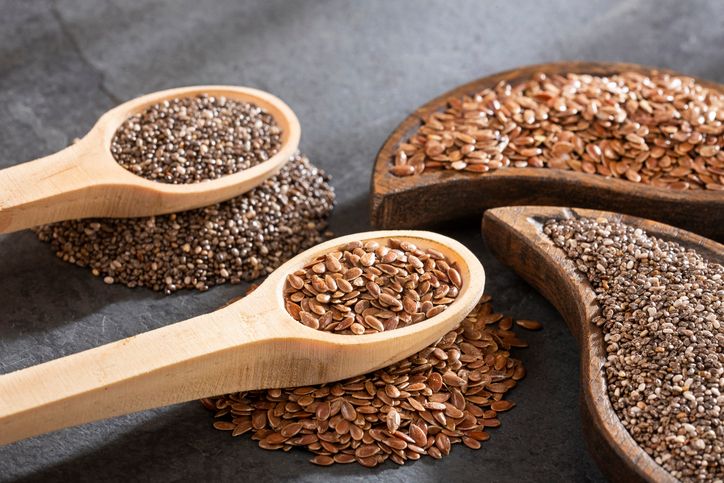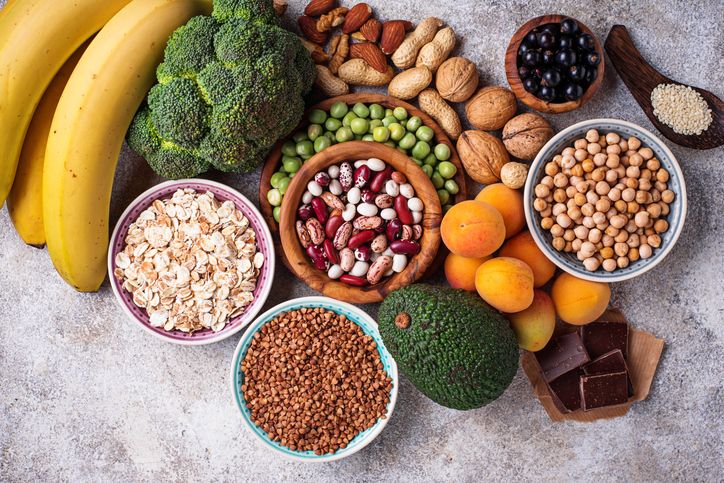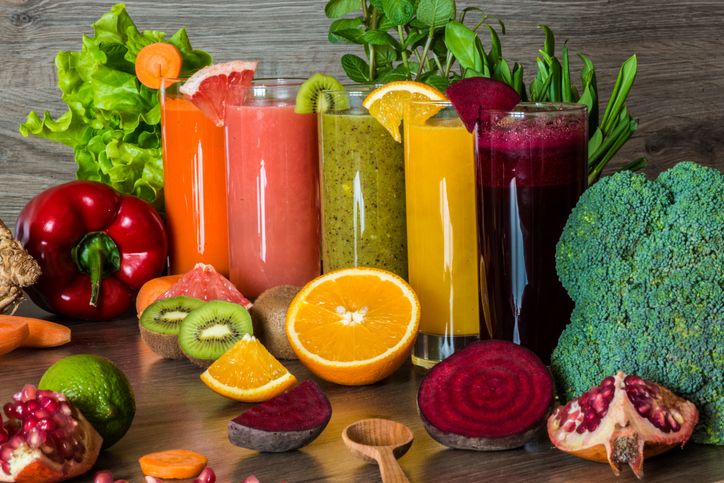
Author: Natalie Ng|Updated: 8 May 2025
You’re making an effort to eat well, move more, and lose weight—but the numbers on the scale just aren’t budging. The reason might be hiding in your snack drawer. Snacking isn’t the problem; it’s how and what you snack on that can slow your progress. Many people fall into habits that work against healthy weight loss without realizing it. It’s easy to overeat while watching TV, reach for something just because it says “healthy” on the label, or grab a handful of snacks without thinking about the portion size. Stress snacking, late-night bites, and using a workout as an excuse for an extra treat can all make it harder to see results. Snacks can absolutely support a balanced diet, especially when they’re made from nutrient rich foods like healthy fats, plant based protein, and filling fiber. But when snacking becomes constant or mindless, it can raise your calorie count and lead to weight gain instead of weight loss. Want to spot the signs your snacks might be getting in the way? Keep reading—your next satisfying snack could be the one that helps you stay on track.

Mindlessly Snacking While Distracted

You’re eating, but your brain isn’t keeping up
It’s easy to lose track of how much you’re eating when your attention is somewhere else. Watching a show, scrolling your phone, or answering emails while snacking can lead to eating way more than you planned. When you're distracted, your brain doesn’t fully process what you’re eating, so you don’t feel as satisfied—and you’re more likely to keep reaching for more.
Why it matters for weight loss
This habit can increase your calorie count without you noticing, slowing down weight loss over time. Even snacks for weight loss like low fat cottage cheese or baby carrots can lead to weight gain if the portions aren’t controlled. Eating while distracted also makes it harder to notice when you're full, which affects blood sugar stability and overall weight management.
Simple ways to fix it
Make snack time a short, focused break. Step away from your screen and sit down with your snack—even if it’s just a handful of sunflower seeds or some apple slices with almond butter. Stick to a single portion like half a cup or a quarter cup, depending on the snack. Choose low calorie snacks that include grams of protein or filling fiber, so you feel full without needing more. If you're using healthy snacks for weight loss like air popped popcorn or homemade trail mix, divide them into snack packs ahead of time. This keeps the calorie count in check and helps you stay consistent.

Choosing "Health Foods" High in Hidden Calories

Looks healthy, but adds up fast
Not all healthy snacks for weight loss are what they seem. Many are packed with more added sugar and calories than you expect. Granola, dried fruit, and even snack bars often carry a health halo that doesn’t match their actual nutritional value. Without checking the label, you could end up eating calorie dense snacks that stall your weight loss goals.
Granola’s high sugar content can mislead you
Granola often sounds like a healthy snack idea, especially with labels boasting whole grain or natural ingredients. But most store-bought versions contain high amounts of added sugar—sometimes over 15 grams per serving. These sweeteners, including honey or maple syrup, still raise your blood sugar and add to your calorie count.
You might think you're making a great snack choice, but just one serving of store-bought granola can contain more sugar than a dessert. If you're trying to lose weight, choose a version with less than 6 grams of sugar per serving or make your own using oats, nuts, and a small amount of dried fruit or fresh fruit. This gives you more control over the calories and added sugar, while still getting essential nutrients and filling fiber.
Dried fruit can be a calorie bomb
A quarter cup of dried fruit, like raisins or dried cranberries, can pack as many calories as a full cup of fresh fruit—but with less volume and fewer grams of fiber. That means you're more likely to overeat and still feel hungry. Many dried fruits also include extra sugar to boost sweetness, which increases your calorie intake without offering more nutritional value.
If you're choosing snacks for weight loss, go for fresh fruit like frozen blueberries, apple slices, or a banana. They're naturally sweet, more filling, and contain essential vitamins and fiber with fewer calories per serving.
Book Now to Experience
S6 Body Sculpting Treatment
1 Minute Self-Registration
Date should not be before minimal date

Grazing Throughout the Day Without Set Times
Snacking all day makes it hard to track
If you’re constantly reaching for a bite here and there with no structure, you’re likely eating more than you think. Grazing without set times blurs the line between meals and snacks, which makes it harder to monitor your total calorie count. Even low calorie snacks like celery sticks or air popped popcorn can add up when eaten in large amounts or too frequently.
Why it slows weight loss
Unstructured snacking can confuse your hunger and fullness signals. Your body needs time between meals to digest and stabilize blood sugar. Without that break, insulin levels can stay elevated, making fat loss more difficult. You’re also more likely to snack out of habit or boredom, not hunger—which increases the risk of eating calorie dense snacks that don’t promote weight loss.
Even nutrient rich foods can become a problem when eaten without limits. Grabbing baby carrots dipped in almond butter five times a day adds more calories than a balanced snack with a defined portion.
How to create a better snack routine
Set regular times for your meals and snacks. For example, eat three main meals and two planned snacks spaced a few hours apart. This helps manage hunger, stabilize blood sugar, and prevent mindless grazing.
Plan your snacks with intention. Choose satisfying snacks like non fat Greek yogurt, a half cup of cottage cheese with fruit, or a quarter cup of sunflower seeds. These offer protein, healthy fats, and fiber—key nutrients that keep you full between meals and support healthy weight loss.

Skipping Meals in Favor of Multiple Snacks
Snacking all day isn't the same as eating real meals
Swapping proper meals for a bunch of snacks might feel convenient, but it often works against weight loss. Snacks are usually quick, processed, and lack the balance of protein, fiber, and healthy fats found in complete meals. This makes it harder to feel full and get the essential nutrients your body needs for energy and metabolism.
Why this backfires
Without structured meals, you’re more likely to eat too many calories or not enough of the right nutrients. You might rely on sweet or salty grab and go snacks that are high in saturated fat, added sugar, or refined carbs—especially when you’re hungry and short on time. This can leave you feeling unsatisfied, leading to more frequent snacking and blood sugar spikes throughout the day.
Meals, on the other hand, are usually more thought-out. A balanced plate could include lean protein, healthy fats like olive oil, whole grains, and vegetables—making it easier to stay full, maintain stable blood sugar, and avoid overeating.
Make meals the foundation of your day
Aim for three balanced meals each day, and add one or two healthy snacks only when needed. Choose high protein snacks like hard-boiled eggs, non fat Greek yogurt, or a tasty treat like apple slices with nut butter. These keep your protein intake consistent and prevent dips in energy.
If you're tempted to replace lunch with multiple snack packs, you might end up eating more calories with less nutritional value. A better approach is to prepare simple meals in advance and use snacks for support—not as a replacement.

Emotional Snacking When Stressed or Bored
Reaching for food when you’re not hungry
Stress, boredom, and anxiety are common triggers for snacking—especially when you're not physically hungry. You might reach for something crunchy or sweet, not because your body needs fuel, but because you're looking for distraction or comfort. This habit can make it hard to maintain a healthy weight loss plan, especially when emotional eating becomes part of your daily routine.
Why emotional snacking adds up
Comfort foods tend to be calorie dense and low in nutrients. Chips, cookies, or ice cream may offer temporary relief, but they don't give your body anything it actually needs. These snacks are often high in added sugar and saturated fat, which can lead to weight gain, energy crashes, and cravings for even more.
On the other hand, nutrient rich foods like greek yogurt, baby carrots, or a small portion of dark chocolate can help satisfy a craving without derailing your day—if eaten for hunger, not emotion.
Identify triggers and change the pattern
Keep a simple journal of what you eat, when, and how you felt at the time. You might notice you snack more after stressful meetings, during late-night screen time, or when you’re bored at home. Once you spot the pattern, you can interrupt it with a different activity.
Swap the food response with something else: take a short walk, drink water, do a simple chore, or call a friend. If you still feel hungry after that, reach for a filling snack like a half cup of low fat cottage cheese, a piece of fresh fruit, or a small handful of homemade trail mix. These give your body protein, fiber, and essential nutrients—without the crash.
Book Now to Experience
S6 Body Sculpting Treatment
1 Minute Self-Registration
Date should not be before minimal date

Ignoring Portion Sizes on Packaged Snacks
One package doesn’t always mean one serving
It’s easy to assume that a single package of snacks equals one serving, but labels often tell a different story. Many packaged snacks—especially multi-packs—contain two or more servings. If you eat the entire pack without checking, you’re likely taking in double or triple the calories you think you are.
How portion confusion affects your weight loss
Small differences in serving size can add up fast. That small bag of chips, cookies, or crackers might list 150 calories per serving, but actually contain 2.5 servings in the bag. Eat the whole thing, and you've just consumed nearly 400 calories—without realizing it. Even classic snacks like whole grain crackers or fruit smoothie pouches can quietly push your calorie count over your target for the day.
This type of eating makes it harder to stay in a calorie deficit, which is essential for healthy weight loss. It also makes it harder to track your intake accurately, even if you’re choosing snacks for weight that seem reasonable at first glance.
What to do instead
Always read the nutrition label before eating a packaged snack. Check:
• Number of servings per container
• Grams per serving or measurement like “half cup” or “12 pieces”
• Calories per serving
If you plan to eat the full package, multiply the listed numbers accordingly. Better yet, portion out your snacks in advance. Use small containers, zip bags, or reusable snack packs to keep servings clear. You can do this with foods like air popped popcorn, dried fruit, or sunflower seeds to make your snack choices easier to manage and more consistent with your weight management goals.

Late Night Snacking Before Bed

Eating close to bedtime slows progress
Snacking late at night—especially just before bed—can interfere with weight loss, even if the snack itself seems harmless. Your metabolism naturally slows down in the evening, and your body is less likely to burn off those calories as efficiently. Nighttime eating often happens out of habit, not hunger, which makes it easier to overeat without noticing.
How it affects your body
Late night snacks can disrupt your sleep cycle, spike blood sugar, and increase cravings the next day. You may also wake up feeling hungrier or more tired, which can push you to make less healthy food choices in the morning. Common late-night cravings tend to include calorie dense or high sugar foods, which don’t support weight loss.
Even seemingly healthy snacks like fruit smoothies or nut butter on crackers can add up if eaten out of routine instead of real hunger. When your body doesn’t need the energy, it’s more likely to store it as fat.
Set boundaries to break the habit
Try setting a “kitchen closed” rule at least 2 to 3 hours before bedtime. If you truly feel hungry, reach for a light, protein-rich snack like half a cup of non fat Greek yogurt, a hard-boiled egg, or a few celery sticks with almond butter. These help stabilize blood sugar and curb hunger without loading on extra calories.
If late-night snacking has become part of your evening routine, consider replacing it with something calming that doesn’t involve food—like reading, stretching, or a warm shower. Shifting your habits in the evening can help you stay on track with your weight loss goals.

Drinking Your Calories Through Smoothies and Juices

Liquid snacks can sneak in too many calories
Smoothies and juices may sound like the best healthy snacks, but they can easily contain more sugar and calories than you expect. Because they’re liquid, they don’t fill you up the same way solid food does. You can drink a large fruit smoothie in minutes without feeling full—then feel hungry again soon after.
Why smoothies and juices slow weight loss
A typical store-bought smoothie can contain up to 50 grams of sugar, especially when made with fruit concentrates, juice, sweetened yogurt, or syrups. Even homemade versions can become calorie dense if you don’t measure ingredients like nut butter, protein powder, or dried fruit. These drinks can spike your blood sugar, increase cravings, and make it harder to stay within your daily calorie target.
Juices are also stripped of fiber, which is essential for satiety and gut health. Drinking fruit without the fiber leads to a quick sugar rush without long-lasting energy. This can leave you reaching for another snack shortly after.
How to make them work for weight management
If you enjoy smoothies, make them at home using whole, nutrient rich foods. Include a high protein base like Greek yogurt, cottage cheese, or protein powder. Add vegetables like spinach or frozen cauliflower for fiber without added sugar. Limit fruit to one serving—like half a banana or a handful of frozen blueberries—and skip added sweeteners completely.
Always measure ingredients like nut butter or olive oil. Just a tablespoon adds over 100 calories, which matters if you're trying to lose weight. Keep portions in check by limiting your smoothie to about one glass (8–12 oz), and drink it as a meal replacement—not as a drink on top of a full meal.
Book Now to Experience
S6 Body Sculpting Treatment
1 Minute Self-Registration
Date should not be before minimal date

Keeping Trigger Foods Within Easy Reach
If it’s in sight, it’s more likely to be eaten
Leaving snacks out on the counter, desk, or in visible places around your home can lead to constant, unplanned eating. When you see chips, cookies, or other tempting foods throughout the day, you’re more likely to grab them—often without feeling hungry. This habit can make it harder to maintain a calorie deficit, which is necessary to lose weight.
Why visibility matters
Keeping food within arm’s reach encourages impulsive snacking. You might reach for something while walking past the kitchen or during a break, not because your body needs fuel, but because the food is there. This type of snacking often involves calorie dense options and doesn’t allow time to choose healthier alternatives.
Even if the snack is marketed as healthy—like whole grain crackers or dried fruit—it still contributes to your overall calorie count. Without portion control or real hunger cues, frequent grazing can stall weight loss progress.
Make your environment support your goals
Store trigger foods out of sight—preferably in a high cupboard, opaque container, or not in the house at all. Replace them with better choices that support healthy weight loss. Keep sliced fresh fruit, celery sticks, or snack packs of frozen blueberries in the fridge. Fill your pantry with portioned nuts, low fat cottage cheese, or air popped popcorn. These swaps provide essential nutrients without encouraging mindless eating.
A small change in where you keep your food can make a big difference. When healthy options are easier to reach, you're more likely to pick a filling snack that promotes weight management.

Using Exercise as an Excuse to Oversnack
Working out doesn’t cancel out overeating
Exercise supports a healthy lifestyle, but it doesn’t give you a free pass to eat anything you want. Many people overestimate how many calories they burn and use workouts to justify extra snacks. This mindset can lead to eating back all the calories you burned—plus more—without realizing it.
Why this slows progress
Snacking after a workout isn’t always bad, but the type and amount of food matter. Grabbing calorie dense “rewards” like protein bars, smoothies, or snack packs loaded with added sugar can undo the calorie deficit you created. Light workouts, such as a 30-minute walk or yoga session, don’t require large post-exercise meals.
This pattern often leads to weight gain or stalled results, especially if you snack out of habit, not hunger. Even healthy snacks for weight loss—like a classic snack of peanut butter on crackers—can add up if you’re not mindful of the portion size.
Refuel the right way
If you're hungry after exercising, choose a high protein snack with healthy fats or plant based protein to support recovery without excess calories. Good options include a hard-boiled egg, non fat Greek yogurt, or a half cup of cottage cheese with a few apple slices. These options provide the grams of protein your body needs to repair muscle and help you feel full longer.
Avoid snacking out of routine. Before you reach for something, ask if you’re truly hungry. If not, hydrate first and wait a few minutes. Matching your snack to your activity level helps promote weight loss and keeps your calorie count balanced throughout the day.

Bonus Tip: Pair Smart Snacking with Body Sculpting for Better Results
A practical way to support your fat-loss efforts
Healthy snacks for weight loss can help control hunger, boost your energy, and support your nutrition goals—but what if you’re still struggling with stubborn fat in certain areas? That’s where treatments like the S6 Body Sculpting Treatment can give you a boost. While balanced meals and smart snacks play a key role in promoting weight loss, this non-invasive treatment offers extra support for body areas that are hard to change through diet alone.
What is the S6 Body Sculpting Treatment?
The S6 Body Sculpting Treatment uses a low-energy bio-laser to target subcutaneous fat in specific areas like the belly, thighs, arms, back, and lower buttocks. The laser penetrates beneath the skin to break down fat cells, releasing fatty acids for natural drainage through your lymphatic system. A vacuum suction massage follows to stimulate circulation and speed up metabolism. The same technology also boosts collagen production, helping to tighten the skin while reducing fat.
This treatment works well for people who follow a healthy lifestyle but still struggle with fat pockets that don’t respond to snacks for weight loss, portion control, or exercise. Think of it as a tool that supports your efforts—not a replacement for healthy habits.
Why it works well alongside healthy snacking
Smart snacking with foods like cottage cheese, baby carrots, whole grain crackers, or apple slices with nut butter helps stabilize blood sugar and support your metabolism throughout the day. Combining these habits with a treatment that speeds up fat cell breakdown can improve your results over time. The treatment complements your balanced diet by helping shape areas that stay unchanged even after switching to low calorie snacks or nutrient rich foods.
Key benefits of the treatment
• Targets stubborn fat areas directly
• Non-invasive: no needles, surgery, or medication
• Helps increase metabolism and promote fat breakdown
• Stimulates collagen for firmer skin
• No downtime—return to your routine after each session
• Suitable for various body types
If you're already choosing healthy snacks like non fat Greek yogurt, frozen blueberries, or protein-packed trail mix and want extra support in achieving your goals, S6 Body Sculpting Treatment can help enhance your progress.
Book S6 now and see how combining smart nutrition with a focused treatment can support long-term, healthy weight loss.Book Now to Experience
S6 Body Sculpting Treatment
1 Minute Self-Registration
Date should not be before minimal date
FAQ
1. What are the best healthy snacks for weight loss between meals?
Some of the best healthy snacks for weight loss are those that offer a good mix of protein, healthy fats, and fiber. Options like non fat Greek yogurt with frozen blueberries, apple slices with almond butter, or a hard-boiled egg with a few whole grain crackers are satisfying choices. These snacks help stabilize blood sugar and keep hunger under control without adding too many calories. Look for items that are around 150–200 calories per serving and contain at least 8–10 grams of protein.
2. How can I control my calorie count without weighing everything?
You don’t need a food scale to control your calorie intake. Instead, use visual cues and portion control strategies. For example, a serving of nut butter is about the size of your thumb, a half cup of cottage cheese fits in a small ramekin, and a quarter cup of dried fruit is roughly a small handful. Pre-portion snacks like air popped popcorn, homemade trail mix, or celery sticks with hummus into small containers or snack packs. This makes it easier to stick to your weight loss goals without having to track every bite.
3. Is it okay to eat snacks late at night if they’re healthy?
Late-night snacking can work against weight management, but it depends on what and how much you eat. If you’re truly hungry, go for a light, protein-rich snack like non fat Greek yogurt, a piece of fresh fruit with a spoon of nut butter, or low fat cottage cheese. Avoid high sugar or high fat snacks close to bedtime, as they can impact your sleep and blood sugar. Keep the portion small—around 100 to 150 calories—and avoid snacking out of habit or boredom.
4. Can healthy snacks help with belly fat reduction?
While no food specifically targets belly fat, healthy snacks can help manage overall weight, which includes fat around the waistline. Choosing snacks that contain plant based protein, filling fiber, and heart healthy monounsaturated fats—like sunflower seeds, dark chocolate, or avocado with whole grain crackers—can support better appetite control. Combined with consistent eating habits and options like the S6 Body Sculpting Treatment, it’s possible to see visible changes in body composition over time.
5. How can I choose snacks that won’t spike my blood sugar?
To prevent blood sugar spikes, go for snacks that combine protein, fat, and fiber. Avoid snacks high in added sugar or refined carbs, such as sweetened cereal bars or dried fruit with no portion limit. Instead, try baby carrots with hummus, non fat Greek yogurt with a sprinkle of sunflower seeds, or half a cup of low fat cottage cheese with fresh fruit. These combinations slow digestion, which helps stabilize blood sugar and keeps you full longer.
Recommended Articles
COPYRIGHT© NEW BEAUTY MANAGEMENT LIMITED 2025. ALL RIGHT RESERVED.




